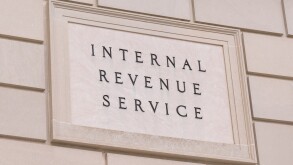
|

|
Ricardo Gonzalez Orta |
Fernando Silis |
The general rules governing Mexico's research and development (R&D) tax credit were published in the Official Gazette on February 28 2017. Taxpayers must comply with the rules to qualify for the credit.
Background
The first incentive supporting R&D activities in Mexico was granted to taxpayers in 2001, in the form of a tax credit. This credit was repealed in 2010, and the National Council of Science and Technology (CONACYT) assumed administration of the incentives but instead provided cash grants for R&D projects. As part of the 2017 tax reform, the tax credit incentive was re-instated. It equals 30% of expenses and investments for technological R&D carried out in Mexico and is creditable against the income tax due for the relevant fiscal year (FY). The credit is applicable only on the amount of qualifying expenses and investments that exceeds the average amount of those items in the prior three FYs.
General rules
The most important rules relating to the R&D tax credit are as follows.
For FY 2017, taxpayers must submit their applications between April 1 and May 31.
The credit will be calculated based on the incremental qualifying expense and investment in the current year as compared to the average amount of the prior three years. Thus, no special consideration is given to taxpayers that have consistently invested in R&D projects over the past several FYs, whereas a taxpayer conducting R&D projects for the first time would automatically have an incremental expense.
The following are examples of expenses that will qualify for the tax credit:
Fees of external researchers;
Experimental testing;
Fieldwork;
Technical training;
External services provided by Mexican third parties;
Specialised lab equipment;
Prototypes;
Materials for experimental designs;
Collaboration services provided by Mexican higher education institutions (HEIs) and public research centres (PRCs);
Pilot plants; and
Services by CONACYT labs.
The following are examples of expenses that do not qualify for the credit:
Civil engineering works;
Acquisitions or leases of immovable property;
Administrative expenses;
Manufacturing expenses;
Employee salaries;
Marketing expenses;
Studies or permits;
Financial expenses; and
Expenses financed by other government incentive programmes.
Applications must be submitted electronically, along with PDFs of the required documentation. For example, positive opinion regarding tax obligations, annual tax returns and breakdown of R&D expenses and investments for the prior three FYs, commitments on patents and IP registration.
CONACYT will assess the R&D projects, and the Inter-agency Committee will decide which projects should be granted the tax credit, taking into account factors such as the continuity of the project, patent and IP registration, prototype development, collaboration with HEIs and PRCs, etc.
The credit may be revoked if the taxpayer provides false information or documentation, does not incur the relevant expenses, or make the investment in the approved period, or has committed tax infractions or crimes.
Good opportunity
The R&D tax credit is an interesting opportunity for taxpayers looking to differentiate themselves from competitors by boosting innovation. However, careful implementation is required to comply with all the applicable rules.
Ricardo Gonzalez Orta (rgonzalezorta@deloittemx.com) and Fernando Silis (fesilis@deloittemx.com)
Deloitte
Website: www.deloitte.com/mx












